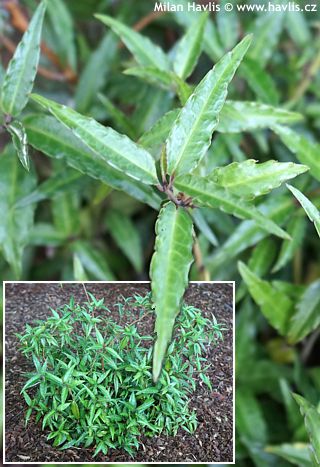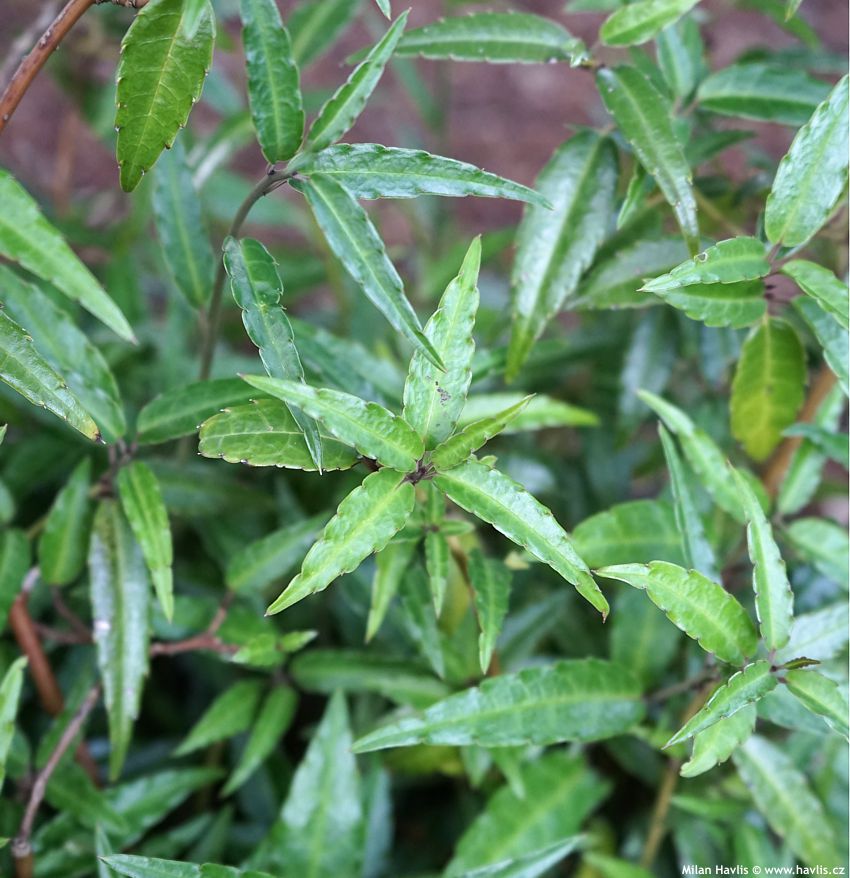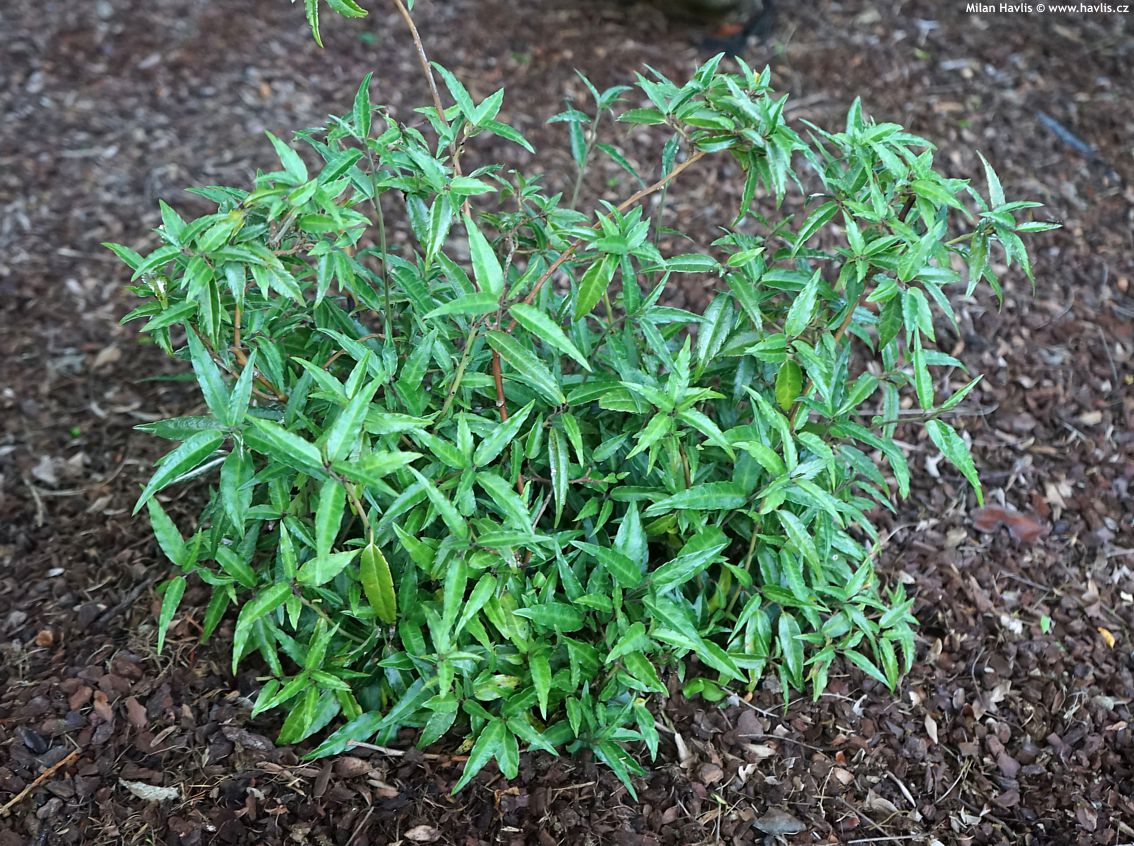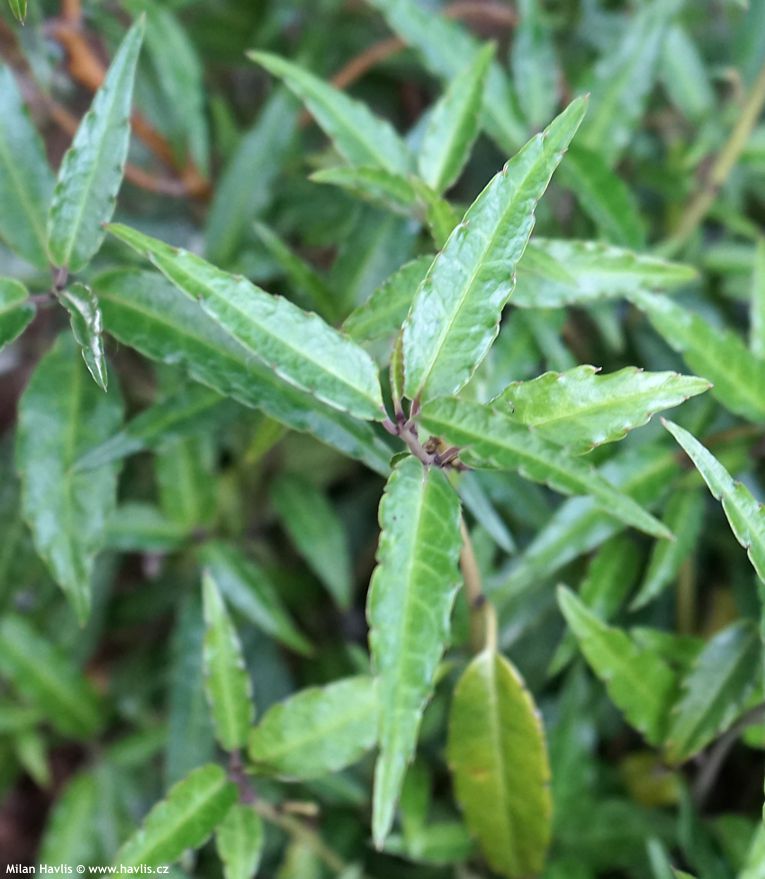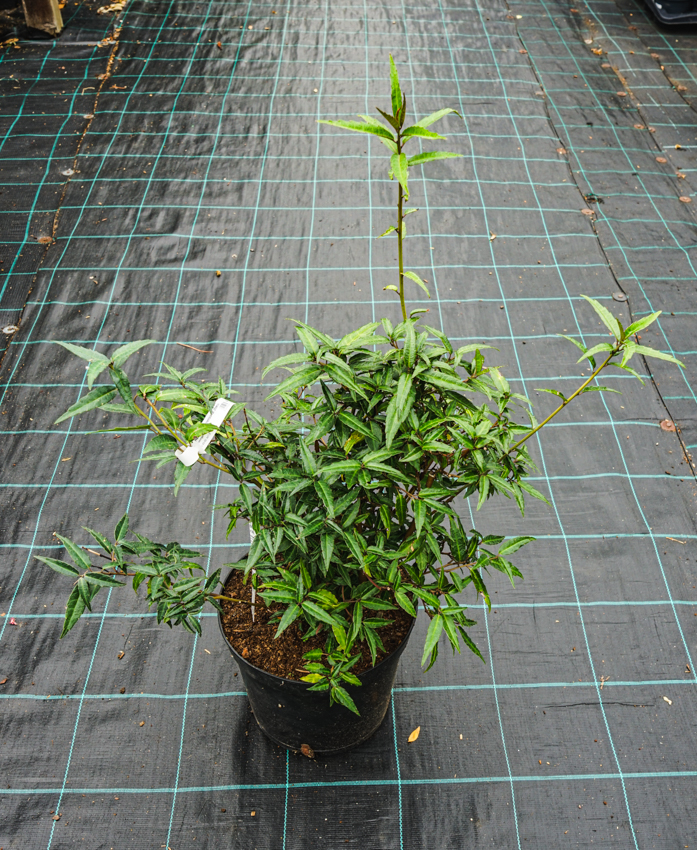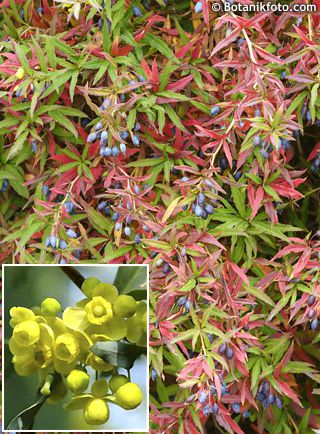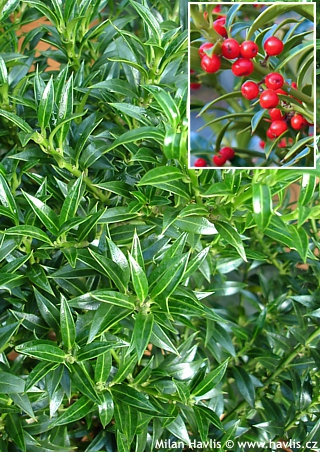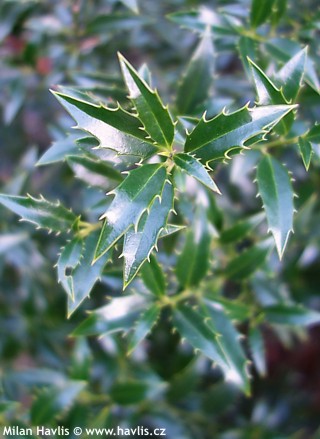Helwingia chinensis var. chinensis Chinese helwingia
Helwingia
Helwingia is an Asian taxon, formerly listed under cornaceae family but thanks to its unique characteristics a new family was created just for them in late 19th century – helwingiaceae. The plants form deciduous to evergreen shrubs whose main attraction are the small flowers on the midribs of the leaves. Helwingia is not generally known in Europe or America, it is mostly cultivated in specialty nurseries for plant collectors and botanical gardens as a rare plant. Being rare as well as very variable brings an expected result – mistakes in naming. In order to avoid that we rely on a rather comprehensive study put together by Japan botanists Hiroshi Hara and Sachiko Kurowasa, published in the Flora of Eastern Himalaya by the University of Tokyo in 1975.
Chinese helwingia, var. chinensis, was first described by Batalin in 1893. It is a hardy species found in North Burma, West and Central China (Yunnan, Szechuan, Kansu, Kweichou, Hupeh). For me it is the most attractive one as it produces reliably evergreen leaves. They are 5-6 cm long, narrowly lanceolate, very glossy, shallowly serrated at margins, and dark green with obscure light green veins. They emerge deep purple to burgundy red which is also the colour of young twigs.
It grows moderately to fast (20-40 cm per year), making slender, upright shoots, spreading by root runners owing to which its forms dense thickets rather than shrubs. The foliage is present top to toe making the plant a good screening option. In mid spring small flowers are produced in the centre of the widest parts of the leaves, and are followed by dark red or black berries in late summer and autumn. You must have both male and female plants to gain fruit – plants are dioecious. Unless you want the plant to spread cover its roots by weed control fabric.
Chinese helwingia naturally grows as an understory plant, it prefers semi-shaded or shaded locations under tall trees, between larger shrubs, at the shady back of the border, or behind walls and houses with limited sunlight. It likes constantly moist but well-drained soil. We experienced the best results with acidic soil where its foliage produced the richest colour. It does not like drought so keep it mulched. We have tested its hardiness so far to -24°C (USDA zone 6), it has even withstood -20°C in an outdoor pot without any damage.
Last update 31-12-2019
Goods are shipped all over Europe. For Russia and U.K. and for further details please read about SHIPPING OPTIONS HERE.
Are you interested in a serious discount for orders NOV-FEB? Check your options here.
THE PRICES INCLUDE VAT of 15%. For quick conversion you can use 1 CZK = approx. 0.04 EUR
- STANDARD QUALITY - Plants of this group are 1st class quality with number of branches and overall density adequate to their size and age, considering they were container grown.
- DE LUXE QUALITY - This label guarantees a luxurious quality of manually selected plants that, compared to their height and age, are exceptionally dense and beautiful.
- EXTRA - These plants are usually mature and bigger specimens with exceptional overall appearance.
- STANDARD (as described in the plant form) means a tree with a trunk of 190-210 cm and a crown at the top, unless specified differently. The commercial size for trees is their girth measured in the height of 1m from ground.
- HOBBY - These plants are of the same quality as our standard-quality plants but younger and therefore cheaper.
- SHRUB - a woody plant with branches growing bushy from the ground level.
- HALF-STANDARD or MINI-STANDARD - a small tree with shorter trunk, its size is usually specified.
- FEATHERED - These are trees with branches growing already from the base of the trunk and up along the stem.
- GRASSES and PERENNIALS - Sizes given usually read the diameter of the pot or the clump, as specified.

































